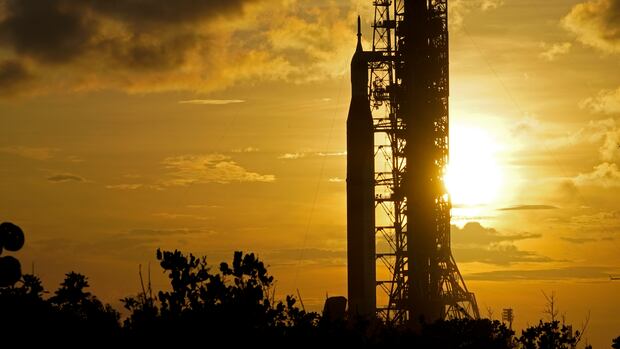What On EarthIs it going to get harder to forecast hurricanes in Canada?
When post-tropical storm Fiona hit Peggy Savery’s cliffside blue bungalow in Port aux Basques, N.L., her safety came down to minutes, not hours.
“I don’t think we were out no more than 30 minutes when it hit,” Savery told What On Earth.
She was able to get out in time, but her home and all her possessions fell into the ocean. The 2022 storm devastated Atlantic Canada and some Caribbean islands.
Now she lives a bit further from the ocean — and when a hurricane or major storm is on the horizon, she’s on alert.
“People that believe this will never happen again, kind of have their heads in the sand,” said Savery.
Some experts believe an infusion of artificial intelligence (AI) will give a significant boost to current hurricane monitoring, though more development and research is needed.
AI is currently being integrated into weather forecasting systems around the world, including at the U.S. National Hurricane Center and the European Centre for Medium-Range Weather Forecasts.
“It will be the next transformation in meteorology,” Jim Abraham, a meteorologist and founder of the Canadian Hurricane Centre, told What On Earth guest host Portia Clark.
Tracking and power
Richard Turner is part of a team at Cambridge University that developed Aardvark Weather, a fully AI-driven weather prediction system, the results of which were published in Nature earlier this year.
Turner says all the best current weather forecasting systems analyze millions of data points about the current state of the atmosphere, which requires huge supercomputers that need large teams of people to operate. They look at data about the current state of the atmosphere and calculate how it will evolve.
Instead of looking at all that current information, an AI model is trained on decades of real-world weather data, so it can see a pattern and predict what will happen next. This requires significantly fewer resources to operate.
For example, Turner trained Aardvark Weather to take data from satellites and weather stations to predict what would happen weeks later.
“That can be competitive with or even better than these big physical models, but come at like a fraction of the cost,” said Turner.
A year after post-tropical storm Fiona destroyed more than 100 homes in Port aux Basques, N.L., the community is still rebuilding and the residents are trying to heal.
For hurricanes, there are two main points of concern for those monitoring the storm: where it’s going and how powerful it is.
Turner says tracking is the AI’s bread and butter.
“The AI models are surprisingly good. They actually can predict where the eye of the hurricane will move to. And they’re actually on a par with, if not a bit more accurate than, the best hurricane forecasting centres in the world,” said Turner.
But they aren’t as good at predicting a storm’s intensity, such as its wind speeds, which is important to determine how to respond to an incoming hurricane.
“The machine learning AI-based methods have not been good on those. So there’s still work to do in this space,” said Turner.

The future of AI and hurricanes
Turner says that even though AI isn’t perfect, it’s developing at a quicker pace than other forecasting technologies.
Often, developing and improving a regular weather forecasting system takes years.
“In the machine learning models, you can add new data, you can reconfigure it, you can retrain it all in a matter of days,” he said.
Even as developments continue, Abraham says not to expect AI to fully replace traditional forecasting. The two need each other, he says, as AI relies on data collected from traditional forecasts.
“It will involve five years at least of testing, I think, to really thoroughly evaluate these things and properly develop them so they can become operational, reliable systems that we depend on day to day,” said Turner.
“That involves running the physical systems — the current approach — alongside the AI approaches for multiple years to make sure they’re safe.”

But that development is at risk of slowing, as U.S. climate organizations face cuts under U.S. President Donald Trump’s administration.
Hundreds of weather forecasters were cut from the National Oceanic and Atmospheric Administration (NOAA) in February in the name of budget cuts.
“The data which people like NOAA provide … in an open way has been completely invaluable for training these systems,” said Turner.
Environment and Climate Change Canada denied What On Earth’s request for an interview about how cuts to NOAA would affect hurricane forecasting in Canada. “Canadians can continue to rely on Environment and Climate Change Canada for timely, reliable hurricane forecasts and alerts and tracking information,” it said in an emailed statement.
With the potential of AI in the forecast, there’s hope that people like Peggy Savery, who live in the path of these powerful storms and are at risk of taking the brunt of the damage, might be better prepared when the next one hits.
“We urgently need these forecasting systems and we need them to be better so we can take like mitigating steps,” said Turner.








